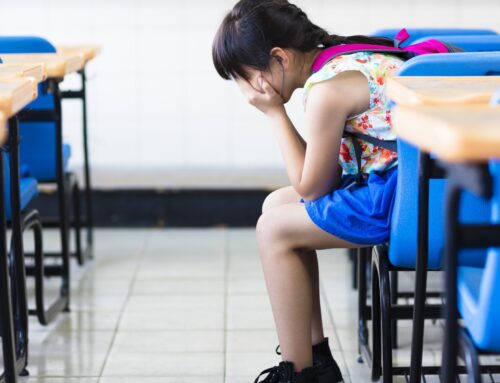
“Charter schools are public schools that operate, to a certain extent, outside the system. They have more control over their teachers, curriculum, and resources. They also have less money than public schools.”
Maggie Gallagher
The above quote is an excellent description of charter schools. Publicly funded but with more independence than their traditional public school counterparts, charter schools first became popular in the 1990s. Since then, these alternatives to conventional options have garnered support.
As far as education in America goes, charter schools are a relatively new kid on the block that seek to fill a gap in school choice. Charter schools hope to improve on the existing public school system and offer parents greater educational variety to meet their child’s specific needs.
“The core of the charter school model is the belief that public schools should be held accountable for student learning,” the Souderton Charter School Collaborative explains, “In exchange for this accountability, charter schools have the responsibility to innovate and share what works with the broader public school system so that all students benefit.”
As school choice continues to grow, parents have realized their ability and responsibility to examine all options before deciding the best route for their children. Charter schools have become a popular choice, but why?
Laying the Groundwork
The Public Charter Schools Insider explains the basis for charter schools. “The original concept of the ‘сharter school’ first originated in the 1970s by a New England educator by the name of Ray Budde. His idea was for groups of teachers to set up contracts or ‘charters’ with their local school board to discover new approaches and ideas in the field of education. Its roots lie in the progressive idea that by empowering the educators with additional freedoms, they can achieve a much higher rate of student success.”
Charter and traditional public schools have some key differences. Charter schools are funded through grants, awards, and private donations, but they are also publicly funded. However, they run under different rules than ordinary public schools.
Unlike public schools, charter schools aren’t limited by the school district. Charter schools accept students regardless of where they live. They possess more freedom in their budget department than conventional public schools while being held to higher accountability for their spending.
On that note, charter schools receive less funding per pupil than public schools. With a funding gap of approximately 13 billion dollars between the two institutions, charter school students get 27% less per-pupil funding than government-run facilities. Despite the budgetary discrepancy, charter schools are an appealing option for parents.
Due to increasing dissatisfaction with the public school system, families continue to yank their children from public schools. School choice proves its value and charter schools benefit from this movement. As parents become dissatisfied with the conventional public school system, because of school choice, they can act on it by choosing a charter school.
Freedom, accountability, and success. These three words represent the fundamental basis for charter schools’ popularity.
A Growing Trend
It’s well established that most parents prefer alternatives to public school for their children. Approximately 64% of parents would choose an option other than public school if they could do so.
These numbers don’t solely favor charter schools, however. According to EdChoice, the data breaks down as follows:
- 40% prefer private schools
- 36% prefer public schools
- 13% prefer charter schools
- 10% prefer homeschooling
*Note: This data represents parental preferences, not actual enrollment numbers
While public schools are the second most popular choice for a single schooling option, parents are acutely aware of the other options available.
The National Charter School Resource Center reported that in 2005, about 2% of American students attended charter schools. Charter schools continued to grow, and by 2006, just a year later, over 3,000 charter schools served over 1 million students nationwide.
The National Alliance for Public Charter Schools reports that by the 2011-2012 school year, over 2 million students were attending private schools. Jumping ahead to the 2019-2020 school year, the same data shows that 7,696 charter schools served nearly 3.4 million students.
Charter schools have only gained popularity over the last decade and a half, and the numbers continue to grow.
Success: Charter vs. Public School
On the surface, charter schools typically achieve the same success rate as public schools, but they do it with less funding and more accountability. While some charter schools produce higher academic achievement than their public school counterparts, by and large, the results are very similar.
There are two noteworthy distinctions, however:
- If test scores are the definition of success, charter and public schools mirror one another’s overall success across the nation. However, if success is defined as the rate of students graduating high school, charter schools enjoy a definitive edge over their public counterparts. Charter school students graduate at a rate 7%-11% higher than conventional public school students.
- Charter schools consistently offer underprivileged students a higher success rate than public schools.
Forbes examines this issue in-depth, concluding that “currently 53% of charter students are in poverty compared to 48% for public schools. Charters also serve more minority students than public schools: charters are 29% black, while public schools are 16%. So not only do they serve more poor students and black students, but for this group, they relatively consistently outperform public schools.”
The Oxford Research Facility echoes Forbes’s sentiments, noting that urban area charter schools are especially successful at boosting the test scores for black students, Latino students, and students from lower-income households.
What They Offer
Championed as “schools of choice,” charter schools are one solution for families looking for options. Charter schools have several unique features that tend to attract parents:
Alternative Educational Approaches
While conventional public schools generally follow the same basic teaching methods, charter schools retain the freedom to offer families alternative approaches. They also allow students to study based on talent or interest, to a great extent.
“Charter schools can…build a curriculum around a specific issue or goal, such as science education or college preparation, or a teaching method, such as Montessori…” Vox explains. This allows a child’s educational experience to cultivate their talents and nurture their interests in a constructive setting.
Innovation is Encouraged
Teachers at charter schools have the freedom to use various teaching methods if they so choose, and they are actually encouraged to expand their talents and access their creative side in the classroom. This provides individualized learning opportunities for the students.
“One of the biggest benefits is that teachers are often encouraged to think outside the box and are encouraged to be innovative and proactive in their classrooms,” notes Thought Co. “This is in contrast to the belief that many public school teachers are too traditional and rigid.”
When teachers have the freedom to act for their students’ best interests unhindered by the restrictions of the public school system, it’s good for kids. When it’s good for kids, parents take notice.
A Private School Feel
Parents enjoy a private school atmosphere. As noted earlier, 40% of parents would prefer a private school for their kids, making private schools the single most popular school choice in America.
While charter schools don’t fall under the umbrella of “private schools,” they can give off the same vibe. Honest Pros and Cons analyzes this concept. “Although charter schools are funded publicly, they are more independent than neighborhood public schools. This makes it more like private schools, minus the fees. They need to hire licensed teachers and administer state-mandated tests. They can even be closed for under-performance.”
Charter schools are smaller than public schools. Public schools have an average of over 500 students, while charter schools have a national average of 182. Smaller schools and fewer students per classroom cultivate a community connection within the school. An attractive aspect to students and parents alike, charter schools foster a close-knit atmosphere, presenting families with the private school environment many parents covet.
Rigorous Standards
Charter schools’ very existence relies on their ability to maintain specific standards. The local public school may or may not meet certain requirements, and if it fails, it remains in business. Meanwhile, charter schools must continue to succeed or face closure.
“There is no central body regulating charter schools, hence they are not strictly regulated,” the World Scholarship Forum explains. “They are independently run and must meet the standards set in their ‘charter.’ It is by meeting these standards that they are able to secure funding to operate. Thus, they must maintain standards as rigorous (if not more rigorous) as public schools.”
This strict adherence to specific standards is an attractive quality to parents.
School Choice
A noticeable positive that charter schools offer is school choice. While private schooling or homeschooling aren’t a possibility for some families, they might not view the local public school as a good option, either. Charter schools give parents another alternative and allow students to excel in an environment that a public school doesn’t offer.
“This is probably the most powerful and compelling argument for charter schools. Even in communities that have excellent public schools, the educational options are not fitted for everyone,” ConnectUs explores this aspect of charter schools. “It is important to note that a neighborhood school is not necessarily a good environment for every child because it may be too academically ambitious or not ambitious enough, too big or too small or prone to a peer group that might be problematic.”
Their Popularity is Growing
There is no doubt that charter schools have been gaining support, and that support continues to grow. As dissatisfaction with the public school system forces parents to rethink their children’s educational options, school choice is becoming increasingly important.
Charter schools have become the new hope of many American families.





[…] Why Are Charter Schools Becoming More Popular? […]
[…] Why Are Charter Schools Becoming More Popular? […]